Zoom H6 Overview
Key Features
- Live/Location Recording & Podcasting
- Swappable X/Y Stereo Mic Capsule
- 4 x XLR-1/4" Mic/Line Inputs with Pads
- Fast, User-Friendly Operability
- Records in WAV up to 96 kHz
- 3.5mm Line & Headphone Outputs
- Onboard Compressor & Low-Cut Filter
- Powered via Batteries, AC, or USB
- Supports SDXC Cards up to 128GB
- Stereo Safety Track Recording
While the original gray H6 is bundled with two mic capsules and premium accessories, the Zoom H6 All Black portable handheld recorder features a sleek black finish and a single mic capsule, making ideal for bands, multi-instrumentalists, and podcasters who don't immediately need the extras. with its X/Y stereo microphone capsule, six versatile mic/line inputs, and up to 6-track recording, the H6 All Black is both user-friendly and easily expandable.
Like other H-Series Handy recorders such as the H4n Pro and H5, you can hold it in your hand, attach it to a mic stand or tripod, or mount it to a camera (shoe mount available separately); the H6 All Black packs an impressive array of features into a rugged, rubberized body that's more than ready to meet the varied demands of musicians, content creators, videographers, and sound designers.
From the intuitive, tactile controls to the plentiful battery life and powerful audio processing functions, the H6 All Black is well equipped for producing pristine audio for complete musical arrangements, independent films, and panel podcasts. It can supply phantom or plug-in power for condenser mics, or accept direct connections from synths, keyboards, drum machines, or +4 dB line-level mixers. No matter the source, Selectable auto-recording and pre-recording ensure that you'll never miss the start of a take, and stereo safety track recording provides duplicate tracks at a lower level to avoid distortion.
Original H6 vs H6 All Black
Whereas the original H6 sports a gray finish, two interchangeable stereo mic capsules, and premium accessoriesâa protective case, a foam windscreen, and a USB cable, the H6 All Black 2020 Version is presented in a sleek, solid black finish and includes a single stereo mic capsule. Both versions include four AA batteries for powering the H6 on the go.
Fast, User-Friendly Operability
The H6 All Black's front panel is ergonomically arranged with its most essential and commonly used controlsâtransport buttons for record, play/pause, stop, back, and forward operations, individual record-arm buttons that double as mute switches during playback, large gain knobs, and pad switches. for added safety, a hold switch disables all front-panel buttons to prevent accidental operation during recording.
Day or night, view vital information such as audio levels, recording time, battery status, and more on the 2" full-color LCD, which happens to be backlit and angled for maximum visibility.
Instant Access to Gain Adjustments
Each H6 input has its own dedicated gain control knob. There's no track Selection or button pressing required to optimize your recording levels; just turn the dials (clearly labeled from 0 to 10) anytime you need to adjust the gain. If your XLR-1/4" input sources are so loud that you need even less gain than the preamps provide at the "0" setting, use four front-panel pad switches to attenuate the combo inputs by 20 dB.
X/Y Stereo Microphone Capsule
Leave your external mics at home and travel light; the H6 All Black includes a stereo microphone capsule (the original H6 includes two interchangeable capsules). with nothing more than the H6, you're set to record a variety of sources, even ear-rattling ones up to 136 dB!
The matching black X/Y capsule provides clear, phase-accurate capture in two different X/Y positionsâ90° for a tight stereo image or 120° for a wider perspective. Just twist the capsules to their premarked positions to switch between the two configurations.
Supports Interchangeable Zoom Mic Capsules
The Zoom mic capsule input on the H6 All Black accommodates Zoom's line of separately available interchangeable capsules, which can be swapped out as easily as the lenses of a camera. with shock-mounted X/Y, Mid-Side, and mono or stereo shotgun mic capsules to choose from, you can be ready to record music, dialog, or sound effects without carting an external microphone setup. Opt for the EXH-6 combo input capsule to accept two additional mic/line signals via XLR-1/4" jacks.
Six Channels of Microphone/Line Inputs
Equipped with four XLR-1/4" combo inputs and a 3.5mm stereo mini-jack input (on the X/Y capsule), the H6 All Black can accommodate condenser microphones, +4 dB balanced line-level sources, or signals from unbalanced instruments with active electronics. Turn on 12, 24, or 48 VDC phantom power to the XLR jacks, or 2.5V plug-in power to the mini jack. Whether you plan on recording studio condenser mics, feeds from wireless receivers, or a lavalier and shotgun mic combo for an interview, the H6 All Black's preamps are ready to deliver low-noise (-120 dB EIN) performance.
Record All Channels Live or Overdub Layers
The H6 All Black boasts 6-channel recording at up to 24-bit / 96 kHz resolution. Record all channels simultaneously or utilize the overdubbing function to add layers of instruments after an initial recording. Adjust levels and pans for your tracks, then use the internal mixdown function to blend six tracks down to a stereo file.
SD Card Recording and Audio Interface Functionality
Maximize portability by recording directly to an SD card (up to 2GB capacity), SDHC card (up to 32GB capacity), or SDXC card (up to 128GB capacity). A 2GB card will yield over 3 hours of 16-bit / 44.1 kHz stereo recording time using the BWF-compliant WAV format for uncompressed audio quality and industry-standard file compatibility. Note that media cards are available separately, and larger capacity cards will increase startup times.
Alternatively, use the H6 All Black as a 6-in / 2-out USB 2.0 audio interface at up to 24-bit / 96 kHz. for audio interface operation with an iPad (Apple Camera Connection Kit required and available separately), Select USB stereo mode, which offers two channels in and out at up to 16-bit / 48 kHz.
3.5mm Outputs for Simultaneous Hookup to a Camera and Headphones
The H6 All Black boasts 3.5mm line and headphone mini-jack outputs for simultaneously feeding your camera/DSLR and a pair of headphones. Independently adjust the headphone volume via the side-panel volume control. for quick playback reference, a built-in monophonic speaker is also provided.
Powered via AA Batteries or AC Adapter
Power the H6 All Black via four included AA batteries, or plug it into a wall outlet with an AD-17 AC adapter (available separately). Alkaline batteries can keep the H6 running for over 20 hours of continuous 16-bit / 44.1 kHz recording using the X/Y mic capsule, or for over 9 hours of nonstop 24-bit / 96 kHz recording using the X/Y mic and the four XLR-1/4" inputs. When using the H6 All Black in the stereo USB audio interface mode, USB bus powering is possible.
Rugged and Portable, Handheld or Mounted
The durable, ergonomic body lends itself naturally to handheld use. Should you need to mount it on a mic stand or tripod, a threaded hole on the back of the H6 All Black obviates the need for stand adapters. Obtain a hot shoe adapter (available separately) to attach the H6 All Black directly to a DSLR.
Signal Processing Adds Sonic Polish
The H6 All Black's onboard effects allow you to add polish to your recordings. Compression and limiting compensate for fluctuations in input level, while a low-cut filter helps eliminate wind noise, blowing, and other kinds of low-frequency rumble. Normalize files for maximum gain, split them into smaller chunks, and even insert up to 99 marks per recording.
There's an onboard metronome and tuner, and you can loop playback and adjust pitch and speed independently, making the H6 All Black an ideal tool for phrase training.
Special Recording Functions
The H6 All Black offers Selectable recording functions designed to prevent you from accidentally missing the start of a performance. By keeping the previous two seconds (one second at 96 kHz) of audio whenever you press the record button, the pre-record option ensures that you'll never cut off the beginning of a great take. Auto-record can automatically start recording when a user-set sound level is detected, making it great for voice-activated recording.
Backup record enables the H6 All Black to automatically record a duplicate of the L/R input with 12 dB less input gain. Even if your original track is distorted, chances are the backup version will be fine!
Supports External Remote Control
Use the RCH-6 remote (available separately in the APH-6 accessory pack) to control the transport, arm tracks, and adjust volume at a distance while eliminating handling noise.
Includes Audio Software
The H6 All Black comes with free download licenses for Steinberg's Cubase LE music production software and WaveLab LE audio editing software, representing a complete audio production toolkit.
Sigma 35mm f/1.4 DG DN Art Overview
Key Features
- Sony E Lens/Full-Frame format
- Aperture Range: f/1.4 to f/16
- Super Multi-Layer and Resistance Coating
- SLD, ELD, FLD , and Aspherical Elements
- Minimum Focus Distance: 11.8"
- Stepping Motor AF System
- Customizable AFL Button
- Physical Aperture Ring; De-Click Switch
- Rounded 11-Blade Diaphragm
- Weather-Sealed Design
A classic wide angle lens updated for full-frame Sony E-mount mirrorless systems, the 35mm f/1.4 DG DN from Sigma is an Art-series prime characterized by its advanced and updated optical design, sleek profile, and bright design. The f/1.4 maximum aperture enables working in low-light conditions and also provides increased control over depth of field for achieving shallow depth of field effects. The optical layout incorporates two SLD Special-Low Dispersion, one ELD Extra-Low Dispersion, and one FLD Low Dispersion elements. It also incorporates two aspherical elements and high refractive index elements to achieve a notable degree of clarity and sharpness with well-controlled distortion and aberrations. Also, a Super Multi-Layer Coating enhances image quality by suppressing lens flare and ghosting for improved contrast and color fidelity in strong lighting conditions.
Balancing the optics is a refined exterior design, which features a physical aperture ring, which can be de-clicked or locked, along with a dedicated focus mode switch and AFL button for intuitive and tactile control. for autofocus, a stepping motor is used that maintains a lightweight and compact design while promoting fast and near silent focusing performance for both stills and video applications. Additionally, the lens features an 11-blade rounded diaphragm for smooth bokeh quality and the lens housing is also weather-sealed to suit working in inclement conditions.
As part of the Art line within Sigma's Global Vision series, this lens is designed to achieve truly notable optical performance and is ideally suited for creative and artistic applications.
Wide-angle lens is designed for full-frame Sony E-mount mirrorless cameras but can also be used with APS-C models where it provides a 52.5mm equivalent focal length.
Bright f/1.4 maximum aperture is particularly well-suited for working in available light conditions and provides extensive control over depth of field for isolating subject matter with Selective focus.
Lens Construction: 15 elements in 11 groups, including one FLD low-dispersion element, one ELD extra-low dispersion element, two SLD special-low dispersion elements, and two aspherical elements.
A Super Multi-Layer Coating has been applied to lens elements in order to minimize lens flare and ghosting and contribute to producing contrast-rich and color-neutral imagery, even in backlit conditions. Resistance coating allows oil and water to be easily wiped from the front lens surface and prevents oil and fat from sticking for easy cleaning.
Integrated stepping motor realizes quick and quiet internal autofocus, which is further complemented by an optimized AF algorithm to produce smoother focusing performance. Face and eye detection supported in feature enabled cameras.
Manual aperture ring can be de-clicked for smooth, silent aperture switching to benefit video applications. Additionally, a dedicated aperture ring lock switch can also be employed to prevent accidental shifting of the aperture setting.
Built-in Autofocus-Lock (AFL) button which can be assigned additional functions widens the Range of operations available on the lens.
Rounded eleven-blade diaphragm contributes to a smooth and pleasing bokeh quality.
Weather-resistant construction with a brass bayonet that affords improved mounting accuracy and rigidity.
Zoom H8 Overview
Key Features
- Podcast/Music/Field Recording Modes
- Swappable X/Y Stereo Mic Capsule
- 4 x XLR Mic Inputs with Pads and +48V
- 2 x XLR-1/4" Mic/Line/Hi-Z Inputs
- Intuitive Color Touchscreen
- 3.5mm Line & Headphone Outputs
- Onboard Compressor & Low-Cut Filter
- Powered via Batteries, AC, or USB
with three app-driven modes that instantly configure the color touchscreen for podcasting, music production, or location recording, the Zoom H8 portable handheld recorder lets you quickly record up To eight simultaneous input signals via a workflow that highly optimized for your task. Plus, it compatible with an array of capsules (available separately) for easy expansion into 10-input recording, Ambisonics 360-degree audio, and more.
Like other H-Series Handy recorders such as the H5 and H6, you can hold the H8 in your hand, attach it To a mic stand or tripod, or mount it To a camera (shoe mount available separately) the H8 packs an impressive array of features into a lightweight body that more than ready To meet the varied demands of podcasters, musicians, sound designers, and content creators. The bundled Cubase LE and WaveLab Cast software programs give you the tools you need To edit, refine, export, and upload your projects.
From the intuitive, tactile controls To the plentiful battery life and powerful audio processing functions, the H8 is well equipped for producing pristine audio for complete musical arrangements, independent films, and panel podcasts. It can supply phantom or plug-in power for condenser mics, or accept direct connections from guitars, keyboards, or drum machines. No matter the source, Selectable auto-recording and pre-recording ensure that you'll never miss the start of a take, and stereo safety track recording provides duplicate tracks at a lower level To avoid distortion.
App-Driven Touchscreen
Operating the H8 is extremely intuitive and user-friendly thanks To the 2.4" color LCD touchscreen and the three app-driven modes optimized for podcasting, music, and field recording workflows at the touch of the screen.
- Podcast App: with four mic channels and two sound pad channels readily available, the Podcast app makes high-quality podcast production easy. Use the 13 pre-loaded sounds or load your own from an SD card To trigger sound effects, music beds, and more from the dedicated Sound Pads.
- Music App: Record up To 10 input tracks, overdub, mix, and enhance your recordings with EQ and compression, all while the Music app puts important controls such as audio levels, faders, and metering at your fingertips. Plus, you can connect To Zooms Guitar Lab via USB To access a vast assortment of amps and effects.
- Field App: Designed for location sound, sound design, conferences, and more, the Field app gives you instant access To large meters for every track, so you can make sure your recordings never clip. It also lets you quickly adjust input type, lo-cut filtering, compression, limiting, the noise gate, and other key settings.
X/Y Stereo Microphone Capsule
Leave your external mics at home and travel light the H8 includes a stereo microphone capsule equipped with two unidirectional mics. with nothing more than the H8, you're set To record speech, practice sessions, concerts, or ambient and environmental sounds, even ear-rattling ones up To 136 dB!
Zoom Capsule System 2.0
Zooms Capsule System 2.0 allows up To four channels of audio To be added To the H8 capsule connection, creating new ways To expand your recording capabilities through the addition of new separately available capsules.
- XAH-8: The XAH-8 capsule delivers pristine stereo recordings via its two condenser microphones. Easily rotate the capsules from a tight X/Y pattern To a wide AB pattern To enhance the stereo image of your recordings.
- VRH-8: The VRH-8 is an Ambisonic mic capsule that utilizes four condenser microphones To deliver immersive 360-audio recordings. A built-in accelerometer helps ensure the capsule is always perfectly aligned, while the onboard Ambisonic decoder automatically handles the necessary conversions, saving you time in post-production.
- EXH-8: The EXH-8 capsule provides four additional XLR inputs, giving you a total of 10. Each additional input has a dedicated gain knob and pad switch. You can even use your favorite condenser microphonesjust connect a power source To the EXH-8 capsule To supply phantom power.
Supports Existing Zoom Mic Capsules
The Zoom mic capsule input on the H8 accommodates Zoom existing line of separately available interchangeable capsules, which can be swapped out as easily as the lenses of a camera. with shock-mounted X/Y, Mid-Side, and mono or stereo shotgun mic capsules To choose from, you can be ready To record music, dialog, or sound effects without carting an external microphone setup. Opt for the EXH-6 combo input capsule To accept two additional mic/line signals via XLR-1/4" jacks.
Fast, User-Friendly Operability
The H8 front panel is ergonomically arranged with its most essential and commonly used controlstransport buttons for record, play/pause, and stop, individual record-arm buttons that double as mute switches during playback, large gain knobs, and pad switches. for added safety, a hold switch disables all front-panel buttons To prevent accidental operation during recording.
Instant Access To Gain Adjustments
Each H8 input has its own dedicated gain control knob. There no track Selection or button pressing required To optimize your recording levels just turn the dials (clearly labeled from 0 To 10) anytime you need To adjust the gain. If your XLR input sources are so loud that you need even less gain than the preamps provide at the "0" setting, use four front-panel pad switches To attenuate the XLR inputs by 20 dB.
Eight Channels of Microphone/Line Inputs
Equipped with four XLR inputs, two XLR-1/4" combo inputs, and a 3.5mm stereo mini-jack input (on the XYH-6 capsule), the H8 can accommodate condenser microphones (via 12, 24, or 48 VDC phantom power), +4 dB balanced line-level sources, or signals from unbalanced instruments with active electronics. Whether you plan on recording studio condenser mics, feeds from wireless receivers, or a lavalier and shotgun mic combo for an interview, the H8 preamps are ready To deliver low-noise performance.
Record All Channels Live or Overdub Layers
The H8 boasts multichannel recording at up To 24-bit / 96 kHz resolution up To 12 tracks (mic capsule, backup recording, XLR 1-4, XLR-1/4" combo A and B, and LR stereo mix) are available.
Record all channels simultaneously or utilize the overdubbing function To add layers of instruments after an initial recording. Adjust levels and pans for your tracks, then use the H8 internal mixdown function To blend your tracks down To a stereo file.
SD Card Recording and Audio Interface Functionality
Maximize portability by recording directly To an SD card (up To 2GB capacity), SDHC card (up To 32GB capacity), or SDXC card (up To 512GB capacity). A 2GB card will yield over three hours of 16-bit / 44.1 kHz stereo recording time using the BWF-compliant WAV format for uncompressed audio quality and industry-standard file compatibility. Note that media cards are available separately, and larger capacity cards will increase startup times.
Alternatively, use the H8 as a 12-in/2-out USB 2.0 audio interface (at up To 24-bit / 96 kHz) with your Mac or Windows computer. for audio interface operation with an iPad, an Apple Camera Connection Kit is required and available separately.
3.5mm Outputs for Simultaneous Hookup To a Camera and Headphones
The H8 boasts 3.5mm line and headphone mini-jack outputs for simultaneously feeding your camera/DSLR and a pair of headphones. for quick playback reference, a built-in monophonic speaker is also provided.
Powered via AA Batteries or AC Adapter
Power the H8 via four included AA batteries, or plug it into a wall outlet with an AD-17 AC adapter (available separately). Alkaline batteries can keep the H8 running for over 20 hours of continuous recording. When using the H8 in the stereo USB audio interface mode, USB bus powering is possible.
Rugged and Portable, Handheld or Mounted
The durable, ergonomic body lends itself naturally To handheld use. Should you need To mount it on a mic stand or tripod, a threaded hole on the back of the H8 obviates the need for stand adapters. Obtain a hot shoe adapter (available separately) To attach the H8 directly To a DSLR.
Signal Processing Adds Sonic Polish
The H8 onboard effects allow you To add polish To your recordings. Compression and limiting compensate for fluctuations in input level, while a low-cut filter helps eliminate wind noise, blowing, and other kinds of low-frequency rumble.
Special Recording Functions
The H8 offers Selectable recording functions designed To prevent you from accidentally missing the start of a performance. By keeping moments of audio that happen prior To you pressing the record button, the pre-record option ensures that you'll never cut off the beginning of a great take. Auto-record can automatically start recording when a user-set sound level is detected, making it great for voice-activated recording.
Backup record enables the H8 To automatically record a duplicate of the L/R input with less input gain. Even if your original track is distorted, chances are the backup version will be fine!
Supports External Remote Control
You can use your iPhone or iPad To monitor level meters and press record, play, and stop in each H8 application mode. Just insert the BTA-1 Bluetooth module (available separately) To your H8 and connect To your iOS device.
Includes Audio Software
The H8 comes with free download licenses for Steinberg Cubase LE music production software and WaveLab Cast audio editing software, representing a complete audio production toolkit.
- Podcasting: WaveLab Cast connects you directly with podcast directories such as Spreaker or Podbean. You can upload episodes quickly, plus directly create and publish RSS feeds.
- Audio for Video: Import your video file and WaveLab Cast will automatically extract the audio. You can use the editing tools To lower unwanted noise, change levels, and remove loud sibilants. Metering options allow you To build new tracks, fade-in your music, and use EQ and compression. Re-attach the audio To the video file using WaveLab Casts export functions.
- Field Recording: WaveLab Cast supports up To 96 kHz audio quality and includes a high-end re-sampler. RestoreRig removes noise and unwanted sounds. You can assemble new files using the snap functions and crossfade options. Once youre done, export your sound files in any popular audio format.
Zoom L8 Overview
Key Features
- Portable Podcasting/Music Studio
- 6 XLR-1/4" Mic/Line Inputs with +48V
- 10 Faders To Control Audio Levels
- Multitrack Recording via SD Card and USB
- Mix-Minus Prevents Call Echo & Feedback
- Built-In Effects and 3-Band EQ
- 4 Headphone Outputs for Host and Guests
- 6 Programmable Pads for Sounds & Music
- Powered via Battery or USB Power Supply
The Zoom LiveTrak L-8 digital mixer and recorder puts the flexibility of Zoom popular LiveTrak L-Series Range in a compact and portable format that optimized for podcasting and music production on the go. The LiveTrak L-8 provides tactile controls and intuitive functionality, so you can start a podcasting or music recording session in minutes.
with six mic preamps, four independent headphone outputs, a phone tap for call-in interviews, and six sound pads, the LiveTrak L-8 can easily handle roundtable podcasts or tracking multiple musicians. Since it can be operated on AA batteries or a USB power supply, it can join you no matter where you go To record.
Whether you record To an SD card, stream via USB To a computer or iOS mobile device, or do both at the same time, the LiveTrak L-8 gives you up To 12 channels of simultaneous multitrack recording. Just add microphones (dynamic or condenser), hook up headphones, and get ready To produce quality content in no time.
Panel Podcasts are No Problem
- Thanks To its six transparent, low-noise mic preamps with Selectable phantom power, the LiveTrak L-8 can accommodate dynamic or condenser microphones for you and multiple guests.
- Just insert an SDHC or SDXC card To start recording right away. Keep in mind that you can multitrack record via USB To a computer or iOS mobile device (separately available Apple Camera Connection Kit required) whether or not you track To an SD card.
- No matter which media you choose, the L-8 records separate tracks To ensure flexibility in post-production processes such as editing and mixing.
Six Sound Pads for Triggering Samples or Music
- Use sound effects and music clips To add excitement To your podcast. The LiveTrak L-8 features six assignable sound pads that allow you To instantly trigger effects, music, applause, prerecorded interviews, or ads.
- The LiveTrak L-8 comes with 13 preset sounds for its sound pads, making it ready for out-of-the-box production.
Easy Phone Call Interviews
- The LiveTrak L-8 phone tap lets you easily interview a guest who is calling in remotely on the phone or via common apps like Skype and FaceTime.
- Simply connect your mobile device To the 3.5mm TRRS port using the supplied TRRS cable (some iOS devices may require a Lightning To headphone jack adapter), and the L-8 utilizes a mix-minus function To ensure that the caller won't hear their own voice echoing back To them.
Multiple Independent Headphone Outputs
- The host and each guest in your podcast should clearly hear the content of your production. The L-8 offers four 1/4" stereo headphone outputs with independent level controls and mix Selectors.
- The main headphone output is sourced from the master output while the three other headphone outs can be assigned To the master mix or an independent cue mix.
- Connect the balanced XLR stereo master outputs To a pair of active speakers for convenient monitoring.
Track Song Demos with Multiple Musicians
- You can easily record song demos and live performances with multiple musicians using the LiveTrak L-8.
- The first two channels of the L-8 support 1/4" Hi-Z inputs for direct connection of instruments such as a guitar and bass.
- Channels 7-8 feature 1/4" line inputs, which can be used To plug in a drum machine or stereo keyboard.
- Utilize the remaining inputs (channels 3-6) for mics on sources such as vocals and drums.
- The four 1/4" headphone outputs allow you To create custom mixes for each musician.
Flexible Powering Methods
- Conveniently run the L-8 in remote locations via four AA batteriesup To 2 hours via alkaline batteries, up To 3.5 hours via 1900 mAh NiMH batteries, or up To 6.5 hours via lithium batteries (batteries available separately).
- A USB cable and the Zoom AD-17 USB-to-AC adapter are included for powering the L-8 from an AC outlet.
- Alternatively, you can power the L-8 via a USB battery or power bank.
- The L-8 USB connection is designed To eliminate accidental interruptions, giving you power on which you can rely.
Efficiently Save and Recall Entire Scenes
- Set your levels, dial in the mix, then save your settings in one of the L-8 seven scene presets.
- Recall a scene at the push of a button To instantly reconfigure the L-8.
- Create different scenes for common scenarios such as podcasting, live streaming, band rehearsals, and more.
Record up To 12 Tracks
- The L-8 records up To 10 discrete tracks and a stereo mix directly To an SD card at up To 24-bit / 96 kHz.
- Use the L-8 as a 12-input / 4-output audio interface with your computer or iOS mobile device via USB at up To 24-bit / 48 kHz.
- Punch record and overdub at any time for more complex productions.
- Optimize the sound of your tracks via onboard effects and each channel 3-band EQ and low-cut filter (effects, EQ, and overdub functions are unavailable at 96 kHz).
Zoom ZDM-1PMP Overview
Key Features
- Optimized for Podcasting & Vocals
- ZDM-1 Dynamic Mic and Custom Windscreen
- Headphones, Tabletop Stand & XLR Cable
- End-Address, Tuned for Rich Voice Tone
- Supercardioid Pattern Reduces Room Noise
- Integrated Shockmount Reduces Vibrations
- Rejects Electromagnetic Interference
- High 135 dB Maximum SPL
- Rugged Metal Construction
- Includes Custom Windscreen
A perfect companion for the PodTrak P4 podcast recorder, the Zoom ZDM-1 Podcast Mic Pack bundles all the essentials you need To complete your home or mobile podcasting studio a microphone, headphones, a tabletop mic stand, a mic cable, and more.
The Zoom ZDM-1 dynamic mic and its custom windscreen help you record your voice with full, broadcast-quality tone and minimal noise from breaths and room ambience while the ZHP-1 closed-back headphones ensure transparent audio reproduction for critical listening. for simple and convenient setup of the mic, the ZDM-1 Podcast Mic Pack also includes an XLR mic cable and a tabletop tripod stand.
Zoom ZDM-1 Dynamic Microphone
Tuned To deliver a robust vocal tone with smooth highs and tight lows, the Zoom ZDM-1 is an affordable dynamic microphone that ideal for podcasters, radio show announcers, rappers, and singers. Thanks To its high SPL handling and broad frequency response, this end-address mic makes it easy To capture your voice with mix-ready broadcast quality.
The large-diaphragm dynamic capsule utilizes a supercardioid pickup pattern To effectively reduce ambient sound such as room noise at the sides of the mic. To isolate the pickup element from handling noise, vibrations, and rumble, the ZDM-1 employs an integrated shock-absorbing mechanism. The ZDM-1 integral humbucking circuit improves the signal-to-noise ratio by inhibiting electromagnetic interference from common sources such as wireless devices, power lines, computer displays, and more.
The all-metal body and grille afford ruggedness and durability for reliable use session after session. The ZDM-1 includes a pivoting mic stand mount for easy positioning and a custom windscreen for attenuation of plosives and breath noise.
- Large-diaphragm dynamic design captures smooth, broadcast-quality sound
- Classic end-address style
- Supercardioid polar pattern provides focused pickup and excellent isolation
- High 135 dB SPL handling ensures clean recordings every time
- 50 Hz To 18 kHz frequency response with tight bass and smooth highs enhances vocal tone for radio, podcasting, and more
- Internal shockmount provides isolation from bumps and handling noise
- Built-in humbucking circuit rejects electromagnetic interference
- Balanced XLR output connector
- All-metal body and grille stands up To daily use
- Includes pivoting mic stand mount, threaded adapter, and custom windscreen
Zoom ZHP-1 Over-Ear, Closed-Back Headphones
The Zoom ZHP-1 are over-ear headphones designed To deliver a neutral, transparent sound for music tracking, editing, and mixing applications, location recording, and monitoring film sound on set. The 40mm neodymium dynamic drivers provide high sensitivity and a wide frequency response of 10 Hz To 20 kHz while the closed-back design enhances acoustic isolation.
Thanks To the self-adjusting headband and replaceable leatherette earpads, the ZHP-1 offer comfort and a fit that accommodates a variety of head sizes. The earcups are rotatable To allow easy single-ear monitoring for vocal sessions and quick signal checks.
The detachable single-sided cable is terminated with a 3.5mm TRS mini plug for compatibility with mobile devices and portable audio recorders, and a 1/4" adapter is included for hookup To audio interfaces, headphone amps, and mixers.
High-sensitivity neodymium dynamic drivers provide a neutral, transparent sound and a frequency response of 10 Hz To 20 kHz
Self-adjusting headband and leatherette earpads ensure comfortable wearing and help your ears stay cool and dry
Over-ear, closed-back design prevents sound from your headphones bleeding into your microphone, keeping noise out so you can critically focus on editing and mixing
Long single-sided cable attaches To the earcup, and an included clasp keeps the cable securely in place
Rotating earcups allow for easy single-ear monitoring
Replaceable leatherette earpads extend the life of the headphones
Sturdy, lightweight construction
Includes a 3.5mm To 1/4" adapter
Zoom TPS-4 Tabletop Tripod Mic Stand
The Zoom TPS-4 is a tripod mic stand offering a compact and lightweight solution for positioning your favorite microphone on a table or desk. Its universal 5/8"-27 thread is made of metal To ensure durability while accommodating most mic clips, shockmounts, and integral mic threads. The height of the TPS-4 can be adjusted from 3.85 To 5" via a simple twist clutch for optimal placement.
Huawei Matepad T10 Kids Edition
Created for Kids' Creativity
Tablet dengan layar 9.7-inch yang cerah ini dilengkapi case anti-shock dari silikon food-grade yang aman dari gigitan. Perangkat ini dirancang untuk pas dengan genggaman anak dan aktivitas harian mereka. Dengan handle yang juga bisa berfungsi sebagai stand, si kecil bisa membawa perangkat ini dengan aman dan juga nonton konten dengan mudah.
Playground by Your Side
Fitur Kids Corner memungkinkan si kecil bermain, belajar, dan menggambar sesuka hati. Gunakan fitur recorder untuk merekam suara mereka, dan abadikan momen bahagia dengan fitur kamera. Anak-anak juga dapat bebas berkarya dengan fitur Kids Painting. Semua karya menarik si kecil akan bisa dinikmati di Multimedia.
Educational Screen Time with Azoomee
Azoomee menawarkan berbagai pilihan acara dengan cerita edukatif menarik yang dilengkapi aneka karakter lucu dari acara sains, DIY, hingga berbagai permainan seru. Dengan ini, anak-anak bisa berkarya, belajar, dan tumbuh dengan aman. Dengan HUAWEI MatePad T 10 Kids Edition, si kecil bisa menikmati Azoomee secara gratis selama 12 bulan.
Fun Trip on BabyBus
Berikan si kecil pengalaman hiburan tak terlupakan! Dengan berbagai musikal, cerita, dan game BabyBus, si kecil dapat mengembangkan kreativitas dan belajar budi pekerti bersama berbagai karakter imut dan interaksi menarik. Kembangkan pengetahuan anak terkait huruf, warna, angka, dan masih banyak lagi bersama BabyBus. Mulai perjalanan edukatif ini dengan gratis untuk 3 bulan pertama dengan HUAWEI MatePad T 10 Kids Edition.
Future Artist in the Making
Jelajahi kreativitas anak dengan pen yang dirancang khusus agar nyaman digunakan anak. Selain mudah digunakan, pen ini juga dapat disimpan di dalam slot pada case sehingga tidak perlu takut hilang. Dengan berbagai pilihan warna dan garis, anak Anda dapat memulai perjalanan penuh kreativitas mereka.
Care for Small Eyes
Untuk si kecil yang suka baca dan konsumsi konten, tablet ini menawarkan mode eBook untuk pengalaman membaca yang menyenangkan. Ada juga fitur Posture Alert yang akan mengingatkan anak untuk menggunakan tablet dengan postur tubuh yang benar. Fitur Blue Light Filter dan Bumpy Road Alert juga dapat menjaga mata anak di berbagai lingkungan dengan tingkat pencahayaan yang berbeda.
Blue light filter
Bumpy road alerts
eBook mode
Posture alerts
Godox ML-H Overview
Convert your MoveLink TX into a handheld microphone with the ML-H from Godox. The smartly designed handle simply slides into the belt clip on the TX (available separately) and allows you to use the microphone/transmitter for wireless man-on-the-street interviews and on-scene video reports.
A foam windscreen is included to reduce breath and wind noise. The 1/4"-20 thread on the bottom lets you attach the ML-H to a small stand (available separately) for tabletop use.
Godox GENIUSMIC UC Overview
Key Features
- Mobile Journalist, Vlogger, Run & Gun
- for USB Type-C Smartphones and Tablets
- Runs on USB Power
- Simple Operation with No Controls
- USB Type-C Male Output Plug
- 3.5mm Headphone Port
- Aluminum Housing Fights RF Disturbance
- Ultracompact and Ultralightweight
- Furry Windshield Minimizes Wind Noise
- Connects Directly to Mobile Device
for vloggers, livestreamers, videographers, and mobile journalists who need a space-saving microphone that provides higher-quality sound capture than their mobile device's built-in mic, the Godox Geniusmic UC offers an ultracompact and affordable solution. This miniature condenser mic connects directly to the USB Type-C port on your smartphone or tablet, no external cabling or mount required. It also features its own headphone output on the rear of the mic body, so you can conveniently monitor your input signal or playback through earbuds or studio headphones.
Since the Geniusmic UC runs on USB power (no batteries required) and has no controls to configure, it ensures easy, user-friendly operation for people of all experience levels. The aluminum housing provides durability, light weight, and effective resistance to interference from RF sources. By incorporating a directional polar pattern, the microphone reduces the pickup of off-axis sound such as ambient noise. Bundled with a foam windscreen and a furry windshield, the Geniusmic UC helps you record audio with less noise from wind whether you shoot indoors or outside.
Ultracompact and Durable
The Geniusmic UC is just 3.1" long and weighs only 1.5 ounces, making it a stealthy companion for your smartphone or tablet. The durable aluminum construction helps to fight against RF disturbance.
Directional Sound Pickup
Utilizing a hypercardioid polar pattern, the Geniusmic UC focuses on sounds in front of it while reducing distracting noises at the sides and to a lesser extent, the rear. This makes it well suited for use in noisy environments and ambience-heavy spaces.
Extended Highs and Strong Output
The Geniusmic UC has an extended frequency response (50 Hz to 20 kHz) and high sensitivity, allowing it to yield detailed audio whether you're recording dialogue, instruments, or nature sounds.
Plug-and-Play Operation
with no need to change or charge batteries, the Geniusmic UC runs on USB power for enhanced convenience. Record quickly and never miss an important moment.
Smartphone Compatibility
The Geniusmic UC features a USB Type-C male plug to enable proper connectivity with smartphones and tablets that have a USB Type-C port.
Headphone Output
with a 3.5mm headphone output on the rear of the mic, it supports monitoring of the input signal (app dependent) or playback while the mic remains connected to your mobile device.
Furry Windshield for Outdoor Shoots
The artificial fur windshield aids in reducing wind noise while protecting the mic from weather and dust. This is especially helpful when shooting outdoors.
Godox GENIUSMIC Overview
Key Features
- Mobile Journalist, Vlogger, Run & Gun
- for Smartphones and Tablets
- Runs on Plug-In Power
- Simple Operation with No Controls
- 3.5mm TRRS Output Plug
- 3.5mm Headphone Port
- Aluminum Housing Fights RF Disturbance
- Ultracompact and Ultralightweight
- Furry Windshield Minimizes Wind Noise
- Connects Directly to Mobile Device
for vloggers, livestreamers, videographers, and mobile journalists who need a space-saving microphone that provides higher-quality sound capture than their mobile device's built-in mic, the Godox Geniusmic offers an ultracompact and affordable solution. This miniature condenser mic connects directly to the 3.5mm headphone port on your smartphone or tablet, no external cabling or mount required. It also features its own headphone output on the rear of the mic body, so you can conveniently monitor your input signal or playback through earbuds or studio headphones.
Since the Geniusmic runs on plug-in power (no batteries required) and has no controls to configure, it ensures easy, user-friendly operation for people of all experience levels. The aluminum housing provides durability, light weight, and effective resistance to interference from RF sources. By incorporating a directional polar pattern, the microphone reduces the pickup of off-axis sound such as ambient noise. Bundled with a foam windscreen and a furry windshield, the Geniusmic helps you record audio with less noise from wind whether you shoot indoors or outside.
Ultracompact and Durable
The Geniusmic is just 3.1" long and weighs only 1.5 ounces, making it a stealthy companion for your smartphone or tablet. The durable aluminum construction helps to fight against RF disturbance.
Directional Sound Pickup
Utilizing a hypercardioid polar pattern, the Geniusmic focuses on sounds in front of it while reducing distracting noises at the sides and to a lesser extent, the rear. This makes it well suited for use in noisy environments and ambience-heavy spaces.
Extended Highs and Strong Output
The Geniusmic has an extended frequency response (50 Hz to 20 kHz) and high sensitivity, allowing it to yield detailed audio whether you're recording dialogue, instruments, or nature sounds.
Plug-and-Play Operation
with no need to change or charge batteries, the Geniusmic runs on plug-in power for enhanced convenience. Record quickly and never miss an important moment.
Smartphone Compatibility
The Geniusmic features a 3.5mm TRRS male mini plug to enable proper connectivity with smartphones and tablets that have a 3.5mm headphone jack.
Headphone Output
with a 3.5mm headphone output on the rear of the mic, it supports monitoring of the input signal (app dependent) or playback while the mic remains connected to your mobile device.
Furry Windshield for Outdoor Shoots
The artificial fur windshield aids in reducing wind noise while protecting the mic from weather and dust. This is especially helpful when shooting outdoors.
Godox LMS-1NL Overview
The LMS-1NL can be carried around easily. The 5.5" gooseneck is flexible to be shaped into any angles during usage. Simply plug it into your transmitter and start recording.
Godox LMS-1N Overview
The LMS-1N can be carried around easily. The 5.5" gooseneck is flexible to be shaped into any angles during usage. Simply plug it into your transmitter and start recording.
Godox LMD-40C Overview
Key Features
- for Phones, Mobile Devices & Cameras
- Record 2-Person Interviews on 1 Device
- Two Omnidirectional Condenser Mics
- 13' Cable with 3.5mm TRRS Connector
- Power Supplied by Smartphone
- LR44 Battery Included for Camera Use
- Includes Lapel Clips & Fastener Tape
- Includes Foam Windscreens
The Godox LMD-40C Dual Omnidirectional Lavalier Microphone features two lav mics attached to a single 3.5mm TRRS connector, making it easy to record two people at the same time to your smartphone, DSLR/mirrorless camera, camcorder, recorder, computer, or similar device.
Great for interviews, the mics feature forgiving omnidirectional pickup patterns that help maintain consistent audio levels, even when the speaker turns away from the microphone. The 74 dB signal-to-noise ratio helps cut down on noise and hiss for more professional-sounding recordings. The cable supplies 13' of length for the subjects to move about in front of the camera.
Powered is supplied by your smartphone or by the included LR44 battery if you're recording to a camera. Two foam windscreens to cut down on wind noise are provided. Two lapel clips and two pieces of hook-and-loop tape to attach the mics to clothing are also included, along with a carrying pouch.
Godox LMS-60G Overview
Key Features
- for Smartphones, DSLRs, and Camcorders
- Omnidirectional Condenser Microphone
- 0 or -10 dB Switchable Output Gain
- Includes Lapel Clip
- 1/4" Adapter
- LR44 Battery
- Foam Windscreen
The LMS-60G Omnidirectional Lavalier Microphone from Godox is compatible with smartphones, DSLRs, camcorders, audio recorders Mac and Windows computers, and more. The omnidirectional pickup pattern is equipped with full, 360 ° coverage and the 19.7' cable terminates with a 3.5mm TRRS mini-jack plug.
The lavalier microphone is powered by an LR44 battery (included) and is equipped with a switch to turn the battery off or on. When using the microphone with a smartphone, toggle the switch off since power is supplied by the smartphone. To operate with a camera, toggle the switch on to use the battery power. This version of the mic features a gain setting that can be switched between 0 and -10 dB, allowing you to adjust the level to suit your camera, phone, or similar recording device. A 1/4" adapter, foam windscreen, and microphone clip are also included.
Godox LMS-60C Overview
Key Features
- for Smartphones, DSLRs, and Camcorders
- Omnidirectional Condenser Microphone
- Fixed Gain Setting
- Includes Lapel Clip
- 1/4" Adapter
- LR44 Battery
- Foam Windscreen
The LMS-60C Omnidirectional Lavalier Microphone from Godox is compatible with smartphones, DSLRs, camcorders, audio recorders, Mac and Windows computers, and more. The omnidirectional pickup pattern is equipped with full, 360° coverage and the 19.7' cable terminates with a 3.5mm TRRS mini-jack plug.
The lavalier microphone is powered by an LR44 battery (included) and is equipped with a switch to turn the battery off or on. When using the microphone with a smartphone, toggle the switch off since power is supplied by the smartphone. To operate with a camera, toggle the switch on to use the battery power. This version of the mic features a fixed output gain setting that cannot be adjusted. A 1/4" adapter, foam windscreen, and microphone clip are also included.
Godox LMS-12A AXL Overview
Key Features
- for Video, Interview, and Presentation
- for TRS-Equipped Transmitters/Recorders
- Omnidirectional Polar Pattern
- Locking 3.5mm TRS Connector
- Attached 3.9' Cable
- Wide Frequency Response
- Durable and Lightweight Aluminum Body
- Includes Foam Windscreen and Mic Clip
Clearly capture speech for videos, interviews, and presentations with the Godox LMS-12A AXL omnidirectional lavalier microphone. It features an attached 3.9' cable with a locking 3.5mm TRS output connector for use with compatible transmitters or portable recorders. The included alligator-style clip lets you attach the mic to clothing for hands-free presentations and performances.
The LMS-12A AXL features a forgiving omnidirectional polar pattern that picks up sound from all around the capsule, helping to ensure consistent levels, even when the user turns away from the mic. A foam windscreen is included to reduce wind and breath noise. The aluminum alloy body provides durability while maintaining a light weight.
True to the Source
with a wide frequency response and high sensitivity, the LMS-12A AXL lets you capture speech clearly. The strong signal-to-noise ratio helps keep self-noise down.
Omnidirectional Polar Pattern
The mic's omnidirectional polar pattern picks up sound from all directions, so you get consistent speech capture even if the mic isn't pointed directly at the speaker.
Attached Cable with Locking TRS Connector
Terminating the attached 3.9' cable is a locking 3.5mm TRS connector for secure hookup to locking TRS input jacks.
Compact and Durable
Built from aluminum alloy, the compact microphone body is both durable and lightweight.
Includes Accessories
The supplied windscreen is made of high-density foam to effectively reduce noise from breaths and rustling of clothes. The mic easily attaches to your subject with the included alligator-style clip.
Godox VD-MIC Overview
Key Features
- Mobile Journalist, Vlogger, Run & Gun
- for Cameras, Mobile Devices & Recorders
- Runs on Plug-In Power
- Simple Operation with No Controls
- 3.5mm TRS Output Jack
- Detachable Coiled TRS and TRRS Cables
- Aluminum Housing Fights RF Disturbance
- Ultracompact and Ultralightweight
- Furry Windshield Minimizes Wind Noise
- Rycote Detachable Shoe Shockmount
for vloggers, livestreamers, videographers, and mobile journalists who need a space-saving microphone that provides higher-quality sound capture than their device's built-in mic, the Godox VD-Mic camera-mount shotgun microphone offers an ultracompact and affordable solution. It even comes with two cables to allow proper hookup to your camera, portable audio recorder, smartphone, or tablet.
Since the VD-Mic runs on plug-in power (no batteries required) and has no controls to configure, it ensures easy, user-friendly operation for people of all experience levels. The aluminum housing provides durability, light weight, and effective resistance to interference from RF sources. Bundled with a Rycote detachable shoe shockmount, a foam windscreen, and a furry windshield, the VD-Mic helps you attain record audio with less noise from vibrations and wind.
Ultracompact and Durable
The VD-Mic is just 3.1" long and weighs only 1.4 ounces, making it a stealthy companion for your camera or mobile device. The durable aluminum construction helps to fight against RF disturbance.
Directional Sound Pickup
Utilizing a cardioid polar pattern, the VD-Mic focuses on sounds in front of it while reducing distracting noises behind it. This makes it well suited for use in noisy environments and ambience-heavy spaces.
Extended Highs and Strong Output
The VD-Mic has an extended frequency response (100 Hz to 20 kHz) and high sensitivity, allowing it to yield detailed audio whether you're recording dialogue, instruments, or nature sounds.
Plug-and-Play Operation
with no need to change or charge batteries, the VD-Mic runs on plug-in power for enhanced convenience. Record quickly and never miss an important moment.
Universal Compatibility
The VD-Mic is supplied with two 3.5mm cablesâone TRS and one TRS to TRRSâto enable proper connectivity with cameras, camcorders, portable audio recorders, smartphones, and tablets. The cables feature a coiled design and right-angle connectors to maintain neatness in operation.
Rycote Detachable Shockmount
The included Rycote detachable shockmount effectively prevents unwanted vibration noises caused by body movements and device operations.
Furry Windshield for Outdoor Shoots
The artificial fur windshield aids in reducing wind noise while protecting the mic from weather and dust. This is especially helpful when shooting outdoors.
H&Y Filters ARZ14 Overview
Key Features
- Fits NIKKOR Z 14-24mm f/2.8 S
- Water- and Oil-Resistant Design
- Double-Sided Coating
This 100mm K-Series Adapter Ring without CPL Slot from H&Y Filters is specifically designed to enable the use of a K-Series Holder on a NIKKOR 14-24mm Z F/2.8 S lens. This adapter ring's waterproof and oil-resistant quality is from a double-sided coating structure. The non-CPL version allows three H&Y filters to be magnetically stacked without vignetting.
Godox AD100pro Overview
Key Features
- 3 x AD100pro Pocket Flash Heads
- AK-R1 Accessory Kit
- S2 Speedlight Bracket for Bowens
- 34" Silver Umbrella
- 33.5" Transparent Umbrella
- CB20 Backpack
Extremely compact and lightweight, the AD100pro Pocket Flash 2-Light Kit from Godox contains everything the traveling photographer needs for studio-quality lighting while shooting on location. This kit contains three AD100pro Pocket Flashes, an AK-R1 Accessory Kit, an S2 Speedlite Bracket for Bowens, a 34" silver umbrella, a 33.5" transparent umbrella, and a CB20 Backpack for storage and transport.
Godox AD100pro Pocket Flash
Building in the popularity of its predecessor, the AD100Pro Pocket Flash from Godox is a compact speedlight with a removable lithium-ion battery that will give you up to 360 full-power flashes and thousands of lower power flashes.
The AD100pro has impressive core features such as 100Ws of power adjustable in nine steps from 1/256 to 1/1, recycling times from 0.01 to 1.5 seconds, and short flash durations. The AD100pro has manual, auto, and stroboscopic capability. Manual mode outputs the user's choice of power, modeling light, and first or second curtain sync. Multi mode controls the stroboscopic rate up to 90 times (90 Hz). Optional wireless transmitters with 32-channel and four groups system control flash mode, first and second curtain sync, High-Speed Sync up to 1/8000 second, power level, and modeling lamp at distances up to 328'. Firmware updates are obtainable on the Godox website.
Benefits
- 9-stop power range, from 1/256 to 1/1
- Fast full-power recycle time of 1.5 seconds
Built-In 2.4 GHz Wireless System
Built-in wireless receiver controls triggering power
Large Capacity Lithium Battery Pack
The 14.4V / 2900mAh battery pack gets 360 full power flashes with 0.01 to 1.5 second recycling
Numerous Control Functions
- Supports flash exposure compensation
- 1/8000 second High-Speed Sync
- First and second curtain sync
- Modeling lamp
- Manual flash
- Multi flash
Godox AK-R1 Accessory Kit for H200R Round Flash Head
One of the AD200 Pocket Flash's interchangeable heads is the H200R Round Flash Head. Designed for it, this Godox AK-R1 Accessory Kit for H200R contains magnetically-attached modifiers that maximize the capabilities of the head. The kit contains a snoot, four-way barndoors, and a honeycomb grid to narrow the light's beam and selectively light your subject. Conversely, a near-180-degree dome, a wide lens, and a bounce card with a frame are provided to expand the beam. Finally, a filter set with three amber CT filters and one green fluorescent filter are also included.
Godox S2 Speedlite Bracket for Bowens
Adjustable to fit most speedlites, the Godox S2 Speedlite Bracket for Bowens is more compact and portable than the original S-type bracket and lets you maximize the potential of your on-camera flash while allowing you to use Bowens accessories. The bracket supports your flash either vertically or horizontally, employing non-scratching, light pressure rather than touch-fasteners or tape. Light modifiers such as reflectors, softboxes, and snoots mount to the front of the bracket as they would on a Bowens flash head. The bracket tilts nearly 180 degrees and has a 5/8" receiver for stand mounting.
Benefits
- No pre-assembly or post disassembly
- Mount speedlite vertically or horizontally
- Mounts with light pressure - no touch-fasteners
- Adjustable to fit most brands of speedlites
- Allows use of studio light modifiers like softboxes
- Umbrella input channel
- Compatible with full-size flash heads such as the Godox AD400Pro
Godox 34" Umbrella for AD300 Pro Flash (Silver)
The 34" Silver Umbrella from Godox is designed for the AD300 Pro Flash and has a silver interior. It provides wide coverage, high contrast, and a substantial boost in the ambient light level. The silver-colored interior offers a specular light and is well-suited for portraits and fashion. Additionally, this unit is designed to fit in the Godox CB20 Backpack.
Godox Umbrella for AD300Pro Flash Head (Transparent, 33.5")
The 33.5" Transparent Umbrella for AD300Pro Flash Head from Godox is a modifier that spreads light over a broad area of your subject. Unlike standard black-backed umbrellas, this umbrella is translucent allowing light to escape from the back of it (convex side) and raise the ambient light level. A unique feature of the umbrella (that's great for low ceilings), is the option of turning it around to "shoot Through" it by pointing the curved outside of the umbrella at your subject for a slightly crisper quality of light.
Godox CB20 Backpack for AD200Pro and Select Godox Strobes
This CB20 Backpack from Godox holds two AD200, AD200Pro, AD300Pro, or AD400Pro strobe units complete with batteries, chargers, wireless remotes, and compact umbrellas for a fully portable lighting setup. Even when fully packed with the lights and accessories, the CB20 still has room to add a camera with lenses and a spacious lined pocket holds a 15" laptop or tablet.
This backpack features padded construction with dividers to protect its contents. The padded, reinforced shoulder straps offer all-day comfort. It incorporates a reflective strip for high visibility and the strap buckle has an integrated safety whistle in case of an emergency.
- Smooth, water-resistant nylon fabric construction
- Four lid pockets plus a bottom zippered mesh pocket
- Two mesh side pockets
- Adjustable dividers
- Padded pocket for 15" laptop
- Full perimeter zipper for easy access
- Padded, reinforced shoulder straps
- Removable waist strap
- Reflective strip
- Safety whistle
Godox TL60 AC Power Adapter Overview
Key Features
- Allows TL60 To Run on 100-240 VAC Power
- Also Provides Battery Charge
As an alternative To battery power, the TL60 AC Power Adapter from Godox allows the light To run on 100 To 240 VAC power. It can also charge the light battery.
Huawei Band 6 - Amber Sunrise
- Layar 1.47 AMOLED
- Daya Tahan Baterai 14 Hari
- 96 Mode Latihan
- 5ATM
- Mendukung Oxygen Saturation Detection-SpO2
- Pemantauan Denyut Jantung
- Pemantauan Tidur
Go Bigger for Better
96 Workout Modes
Panduan ilmiah menggunakan algoritma TruSportTM.
1.47' FullView Screen
Ukuran area tampilan 1,48 kali lebih besar.
All-Day SpO2 Monitoring
Peringatan level SpO2 rendah.
TruSeenTM 4.0 Heart-Rate Monitoring
24/7 pemantauan detak jantung & peringatan detak rendah / tinggi.
TruSleepTM 2.0 Sleep Tracking
4 pelacakan status tidur & 200+ saran tidur yang lebih baik.
2-Week Battery Life
Pengisian cepat melalui dok magnet.
New Band on the Block
HUAWEI Band 6 memiliki layar AMOLED FullView 1,47 inci, ukuran area tampilan 1,48 kali lebih besar, dan rasio layar-ke-tubuh 64% dengan bezel rendah. Kombinasikan itu dengan layar resolusi tinggi 194 x 368 dengan 282 PPI dan Anda akan mendapatkan sesuatu yang sangat mengesankan untuk dilihat di pergelangan tangan Anda.
Making Data Greater
Tampilan rasio layar-ke-tubuh yang besar dan tinggi tidak hanya terlihat bagus, tetapi juga memberi Anda lebih banyak data yang Anda inginkan. Foto yang lebih besar, statistik olahraga yang lebih banyak, dan pemantauan detak jantung yang konstan dapat ditampilkan dengan detail yang menakjubkan. Dan dapatkan lebih banyak kebebasan untuk melihat semuanya, berkat kontrol layar sentuh 4 arah yang intuitif.
Face it Your Way
Ubah watch Anda untuk mencerminkan suasana hati Anda. Dengan berbagai macam desain tampilan jam yang dapat dipilih, dapat diakses melalui HUAWEI Watch Face Store, akan selalu ada wajah yang menarik perhatian Anda. Tukar dengan gesekan sederhana, dan bahkan gunakan foto Anda sendiri. Selalu tampilkan tampilan jam tangan terbaik Anda.
Comfort in Colour
Kenakan apa yang terasa tepat untuk Anda. Pilih dari 3 warna tali HUAWEI Band 6 yang berbeda, masing-masing dengan estetika masing-masing. Terbuat dari silikon yang ramah kulit dengan perawatan UV, bahan ini sangat ringan dan menyegarkan tahan kotoran. Dan dengan berat hanya 18g, ikat diri Anda untuk pemakaian yang sangat nyaman.
2 Weeks Battery Life
Perangkat atlet dunia yang dapat dikenakan, HUAWEI Band 6 menawarkan masa pakai baterai 14 hari yang luar biasa untuk penggunaan biasa, dan 10 hari untuk penggunaan berat. Jika Anda benar-benar kehabisan baterai, tidak masalah - Anda bisa mendapatkan penggunaan 2 hari hanya dengan waktu pengisian 5 menit dengan pengisi daya magnetis. Hidup ini terlalu singkat untuk selalu kehabisan itu
All-day Heart Rate Monitoring
Melacak detak jantung Anda adalah salah satu hal terbaik yang dapat Anda lakukan untuk kebugaran dan kesehatan Anda. Teknologi pemantauan detak jantung TruSeenTM 4.0 menggunakan lensa optik dan pemrosesan data berbasis AI untuk memantau detak jantung Anda secara akurat 24 jam sehari. Waspada langsung saat detak jantung Anda turun di bawah atau naik di atas tingkat aman. Utamakan kesehatan jantung Anda.
All-day SpO2 Monitoring
Saturasi oksigen darah rendah kronis, SpO2, dapat menyebabkan kelelahan, kehilangan memori, dan bahkan kerusakan otak dan jantung. Untuk alasan ini, Anda pasti ingin memastikan Anda selalu berada di zona aman. HUAWEI Band 6 memiliki sistem deteksi SpO2 internal1 yang memantau saturasi oksigen darah Anda 24/7. Jika turun terlalu rendah, pita akan bergetar, sehingga Anda dapat mengambil waktu untuk bernapas dan mendapatkan kembali keseimbangan.
TruSleepTM 2.0 Sleep Tracking
Bangun untuk tidur lebih nyenyak. TruSleepTM 2.0 mendeteksi saat Anda bangun, dan saat Anda berada di salah satu dari 4 kondisi tidur yang berbeda - tidur nyenyak, tidur ringan, REM, dan tidur siang. Dengan peningkatan keakuratan 96,3%, ini mencatat tidak hanya seberapa lama Anda tidur, tetapi juga kualitas tidur Anda. 6 masalah tidur utama dapat diidentifikasi, dan Anda akan menerima lebih dari 200 saran perbaikan tidur. Hari yang lebih baik dimulai dengan tidur yang lebih baik.
TruRelaxTM Stress Monitoring
Meringankan, jangan menghidupkannya kembali. Lacak tingkat stres Anda sepanjang hari dengan pemantauan stres TruRelaxTM, dan jika terlalu tinggi, gunakan panduan pelatihan pernapasan bawaan untuk mengembalikan diri Anda ke keadaan pikiran yang rileks dan fokus. Mulailah menuju kehidupan yang tidak terlalu stres.
Menstrual Cycle Tracking
Tetap berhubungan dengan tubuh Anda. Simpan kalender siklus menstruasi Anda yang mudah dinavigasi dengan HUAWEI Band 6. Dapatkan pengingat yang bijaksana dan tepat waktu tentang kapan menstruasi Anda akan datang. Teman yang peduli dan membantu di pergelangan tangan Anda
Ring in the New You
Aktifkan hari Anda dengan menetapkan 3 target aktivitas harian - Langkah, waktu latihan, dan waktu berdiri Jam Aktif, Aktivitas Intensitas Sedang hingga Tinggi. HUAWEI Band 6 akan secara otomatis melacak kemajuan Anda melalui cincin warna-warni yang menarik perhatian. Dapatkan pengingat dan pemberitahuan yang memotivasi ketika Anda telah mencapai tujuan Anda. Selalu terasa lebih baik saat Anda mendapatkannya.
Work it all Out
Saat Anda mengerahkan seluruh upaya Anda untuk berolahraga, biarkan HUAWEI Band 6 menangani sisanya. Pilih dari hingga 96 mode olahraga yang berbeda, dan pantau detak jantung, kalori, dan lainnya. Semua data Anda dapat disimpan dan dianalisis dalam grafik yang mudah dibaca, sehingga Anda dapat memetakan perjalanan kebugaran Anda dan menetapkan tujuan yang menginspirasi Anda.
Personal Assistant
HUAWEI Band 6 bukan hanya pelacak kesehatan dan kebugaran, ini juga cara yang lebih nyaman untuk berinteraksi dengan ponsel Anda. Lihat panggilan masuk dan pesan, dapatkan pembaruan cuaca, kontrol musik Anda, serta ambil foto melalui kamera ponsel Anda, semua dari kenyamanan pergelangan tangan Anda sendiri.
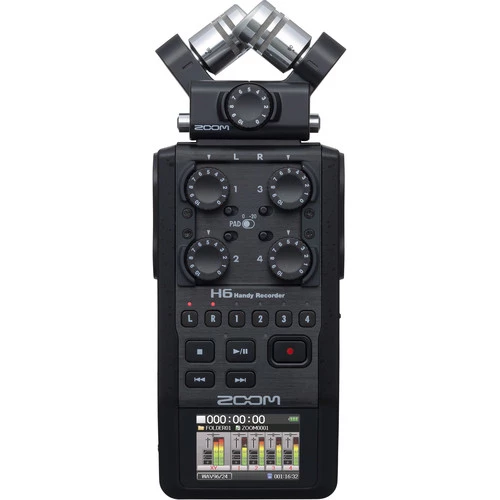
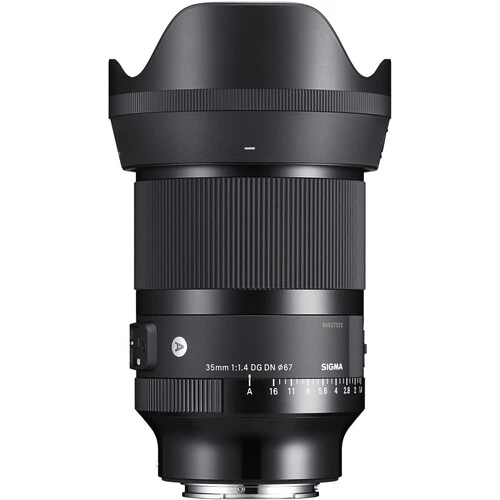
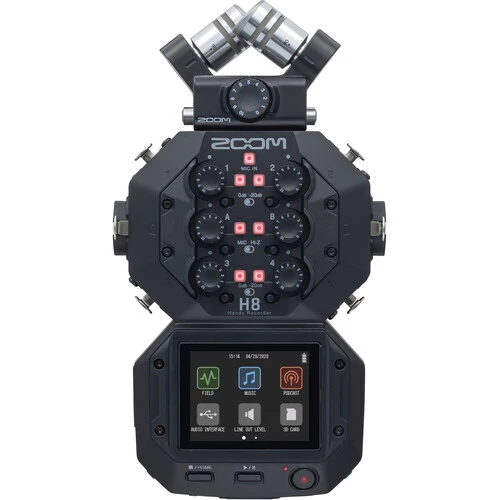
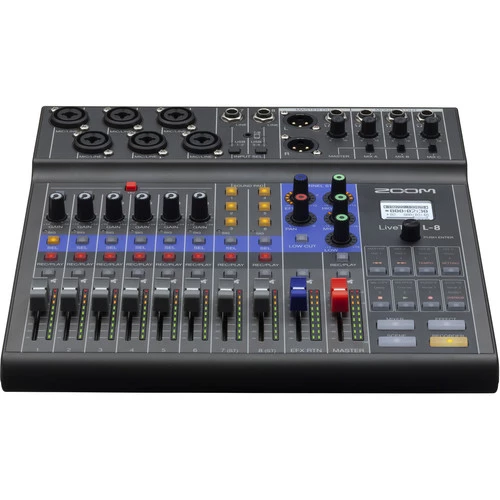
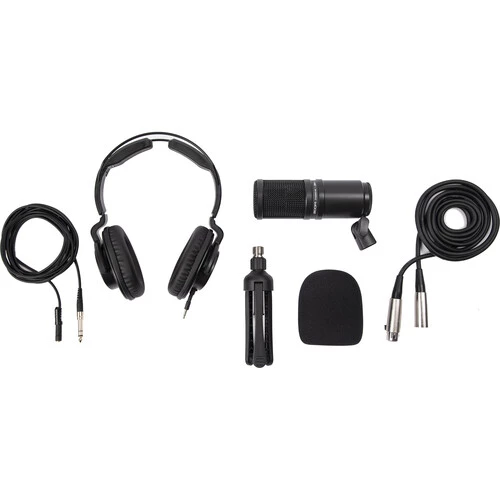
.webp)
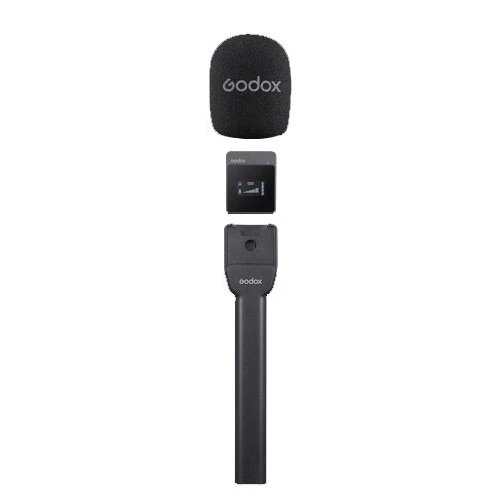
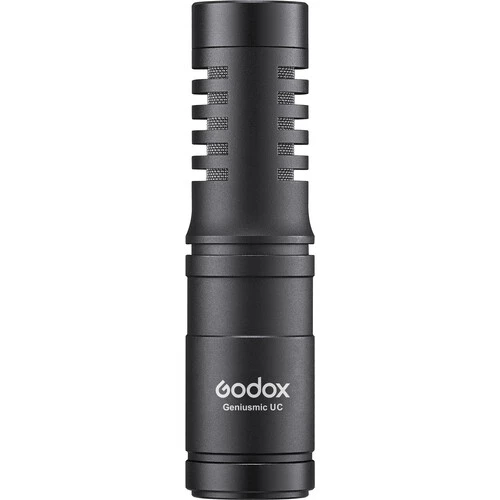
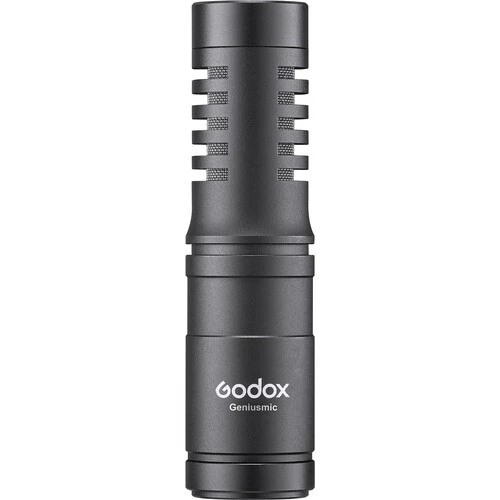
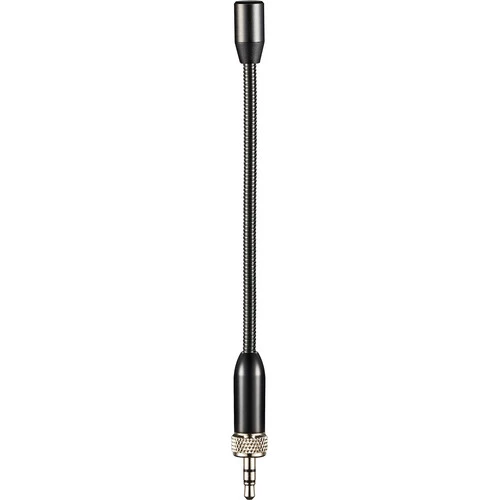
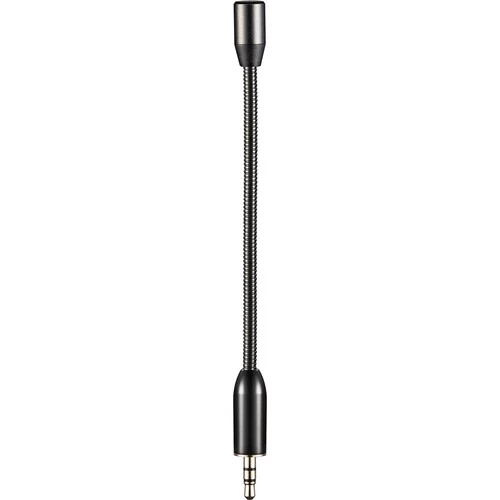
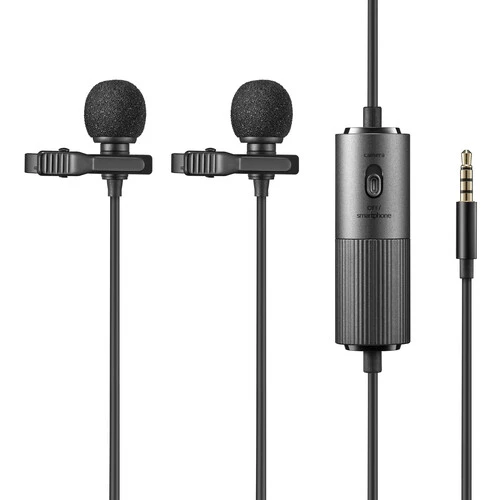
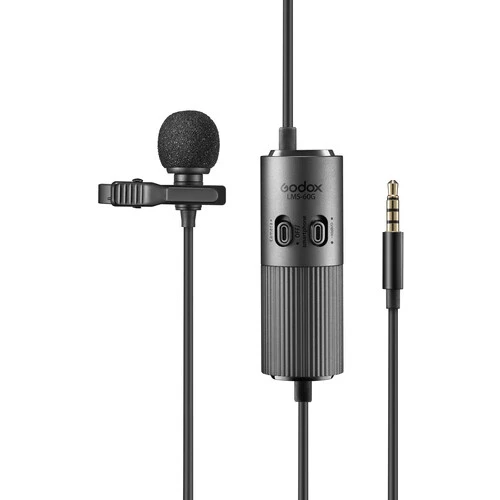
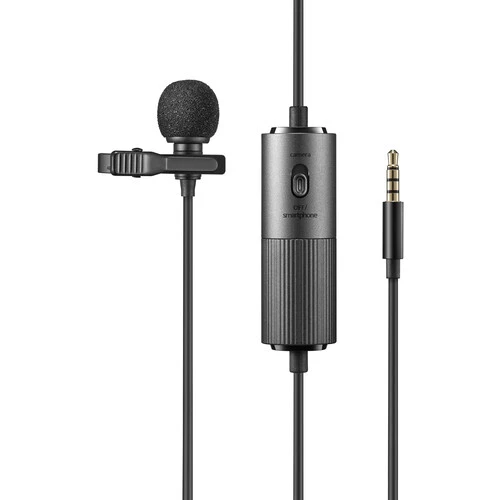
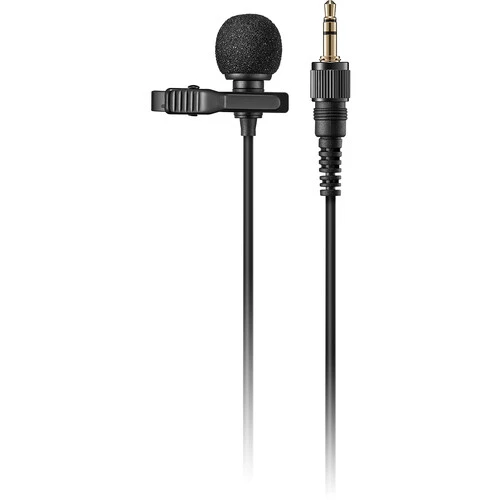
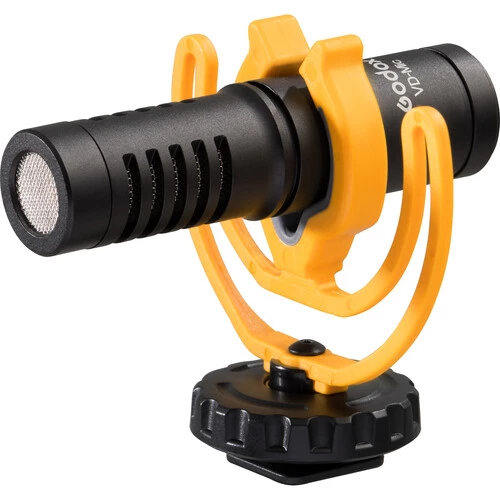
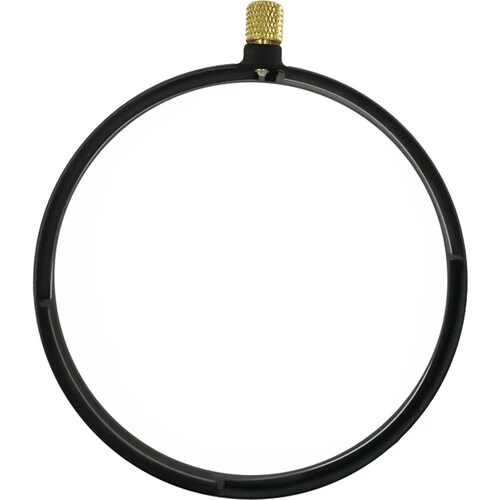

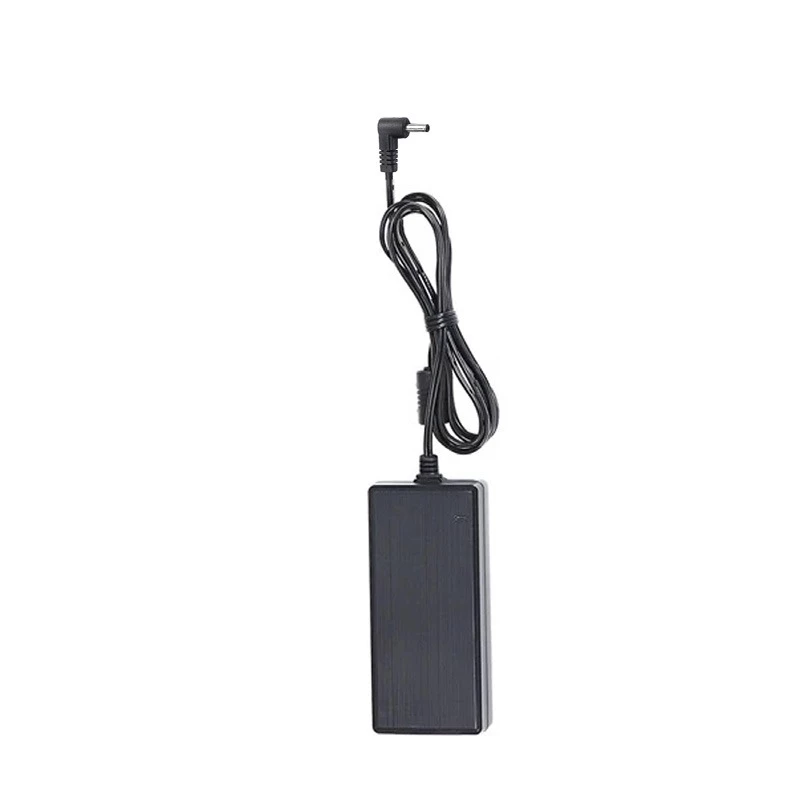
.webp)
